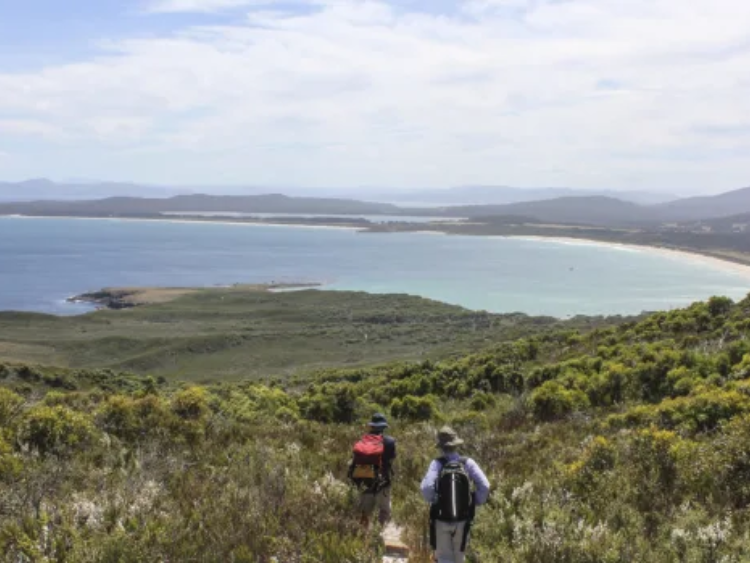
Bruny Island is located off the southeastern coast of Tasmania, Australia. It's about 50 kilometers southeast of the state capital, Hobart. The island is separated from the Tasmanian mainland by the D'Entrecasteaux Channel to the northwest and the Storm Bay to the northeast.


Bruny Island has been part of the geographical landscape for thousands of years. It was named after French explorer Bruni d'Entrecasteaux, who explored the area in 1792. However, the island has been inhabited by Aboriginal people for over 35,000 years before European arrival.

Bruny Island wasn't "invented" by anyone. It's a natural landform that has existed for thousands of years. It was discovered and named by European explorers, but its existence predates their arrival. The indigenous Tasmanian Aboriginal people have lived in the region for tens of thousands of years prior to European exploration.

Bruny Island is named after French explorer Bruni d'Entrecasteaux, who explored the area in 1792. The island was named in his honor by members of his expedition. Bruni d'Entrecasteaux was searching for the lost expedition of French explorer La Pérouse, and during his voyage, he charted several areas along the southern coast of Tasmania, including the island that now bears his name.




Bruny Island offers a diverse range of hiking opportunities that attract hiking lovers for several reasons:
1. **Scenic Beauty**: The island boasts stunning coastal landscapes, pristine beaches, rugged cliffs, and lush forests, providing breathtaking views along hiking trails.
2. **Varied Terrain**: Hikers can explore a variety of terrains, from coastal tracks offering ocean views to bushwalks through eucalypt forests and fern-filled gullies. The diversity of landscapes makes hiking on Bruny Island an exciting adventure.
3. **Abundant Wildlife**: Bruny Island is home to diverse wildlife, including native birds, wallabies, echidnas, and even the occasional sighting of seals and dolphins along the coastline. Hikers often encounter wildlife while exploring the island's trails.
4. **Tranquility and Solitude**: Many of Bruny Island's hiking trails are less frequented compared to mainland tracks, offering hikers a sense of solitude and tranquility amidst nature.
5. **Accessibility**: The island has a range of hiking trails suitable for all levels of fitness and experience, from easy coastal walks to more challenging tracks that lead to panoramic viewpoints.
6. **Cultural and Historical Sites**: In addition to its natural beauty, Bruny Island also has cultural and historical significance, with hiking trails that lead to sites such as Aboriginal middens, historic lighthouses, and remnants of early European settlement.
Overall, Bruny Island offers a unique hiking experience with its combination of stunning scenery, diverse ecosystems, wildlife encounters, and opportunities for exploration and adventure.






Bruny Island can be a great destination for hiking year-round, but there are some factors to consider:
1. **Weather**: Tasmania, including Bruny Island, can experience changeable weather conditions throughout the year. Summer (December to February) generally offers the most stable weather with warmer temperatures, making it popular for hiking. However, be prepared for occasional hot days and the possibility of bushfires. Autumn (March to May) and spring (September to November) can also be pleasant times for hiking, with milder temperatures and fewer crowds. Winter (June to August) tends to be colder and wetter, but some hikers enjoy the solitude and the dramatic beauty of the island during this season.
2. **Track Conditions**: Some hiking trails on Bruny Island may be affected by weather conditions, particularly during the wetter months. Tracks may become muddy or slippery, so it's essential to wear appropriate footwear and exercise caution.
3. **Wildlife Viewing**: Different times of the year offer unique opportunities for wildlife viewing on Bruny Island. For example, spring is a great time for birdwatching as many species are breeding and nesting, while winter may offer sightings of migrating whales along the coast.
4. **Crowds**: Peak tourist seasons, such as summer and holidays, may bring more crowds to Bruny Island, including popular hiking trails. If you prefer quieter hikes, consider visiting during the shoulder seasons or weekdays.
Overall, while Bruny Island can be enjoyed for hiking year-round, it's essential to consider weather conditions, track accessibility, and personal preferences when planning your visit.